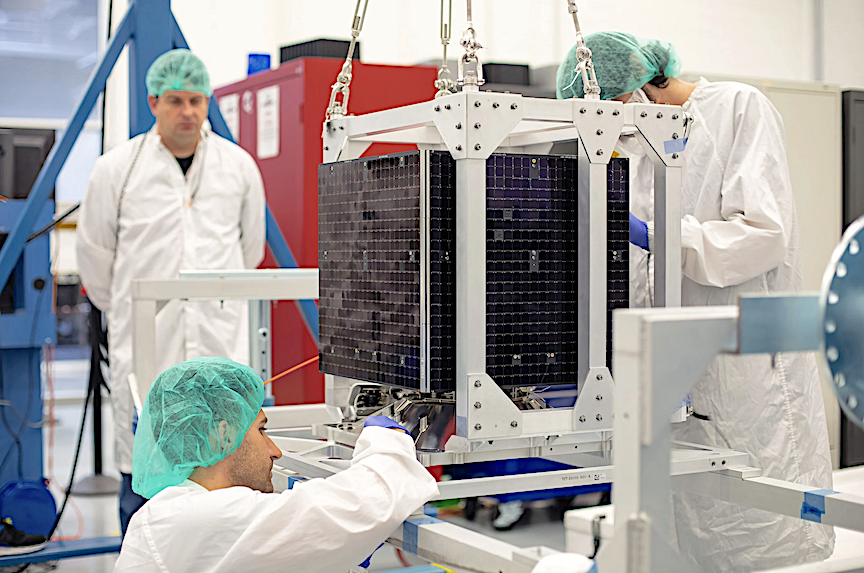
Delivered in less than 15 months by prime contractor Millennium Space Systems, a Boeing company, Tetra-1 is an experimental satellite designed for a variety of prototype missions in and around geostationary orbit, or GEO. The launch marks a new era for the Space Force, as it focuses on building and fielding new capabilities faster than in the past.
“The threat to our space systems is real. Speed is critical in developing advanced capabilities to stay ahead and, if necessary, defeat the threat.” said Col Joseph J. Roth, Innovation and Prototyping senior materiel leader for the U.S. Space Force Space Systems Command. “Tetra-1 is a great example of how a small company, and an innovative contracting approach, authorized by Congress, came together, and delivered an advanced satellite in record time.”
The small sat, about the size of a large dorm-room refrigerator, will help Space Force operators develop tactics, techniques, and procedures for Department of Defense missions.
Tetra-1 was the pacesetting first prototype awarded under Space Systems Command’s other transaction authority, or OTA, called the Space Enterprise Consortium (SpEC), that seeks to speed up procurements and diversify industry partnerships.
Building Smarter
To move fast on development and production of Tetra-1, Millennium Space Systems pulled its expertise from a variety of programs, including the GEO ALTAIR Pathfinder satellite that launched in 2017.
“It is important for SSC to deliver capabilities on time and within budget,” said Roth. “It is also important for the commercial space sector to continue to innovate and help drive down costs.”
“We’re known for delivering systems fast,” said Jason Kim, chief executive officer of Millennium Space Systems. “Our innovation is enabled by the fact that we build 80 percent of our components in-house. That lets us design, build and deliver a completely new satellite in a very short timeline.”

Small Sats, Layered Architecture
The Defense Department’s embrace of Tetra and other small satellites is being driven by the need to introduce resilient satellite systems and architectures to counter the Great Power competition. That’s because large, costly, exquisite satellite systems such as the Space Based Infrared System (SBIRS) — the fifth one was launched in mid-2021 and cost about $1 billion — are increasingly vulnerable to outright attack, which is a capability Russia demonstrated in November when it destroyed one of its own satellites with an anti-satellite missile.
“What we’re seeing is that some of the high-value asset missions that we’ve traditionally done in the past are being envisioned for large constellations of small satellites instead,” said Kim. “There are some benefits to the large constellations of small satellites in that the unit price point of each small satellite has gone down over the years. That lends itself to more affordability. And we’re now building these small satellites much faster and more efficiently, providing schedule savings.”
Use of small sats in a layered architecture spread across low-Earth orbit, medium-Earth orbit, and GEO will let the DoD quickly reconstitute capabilities should certain satellites become inoperative. For instance, loss of one SBIRS satellite in its five-satellite constellation could leave a major gap in missile-warning coverage. Conversely, loss of a few satellites in a larger constellation of dozens of satellites will only incrementally degrade capabilities and can be replaced in a faster fashion.
“Distributing the space architecture will help us build resiliency over time so that there’s not a single point of failure anywhere,” explained Roth. “We’re focused on making our systems and architectures more resilient and robust so if something happens, the Space Force can still perform the mission without fail.”
